SIM Card Adapters Reviewed
by Joshua Ho on May 24, 2014 5:12 AM EST- Posted in
- Smartphones
- Mobile
- Laptops
- Tablets
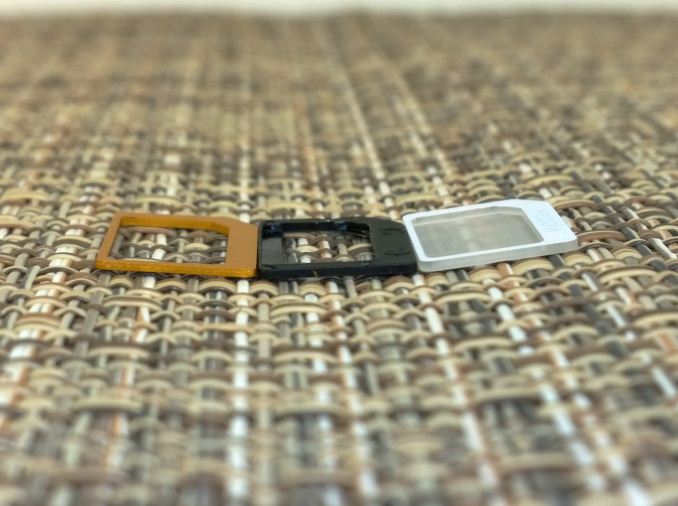
A few weeks ago, I was genuinely questioning what SIM adapter I should buy. After all, while a SIM adapter is generally cheap and also a relatively simple product, the consequences for poor design can be catastrophic. As a product of today’s need to ensure that phones and other mobile devices are made as small as possible, it’s often the case that the SIM slot is soldered to the logic board, which is often one of the most expensive parts of the device. This mean that ruining the SIM slot by using the wrong five dollar adapter can easily cause over a hundred dollars in damage.
So I decided to buy every distinct type of SIM adapter on the market. To my understanding, there are only three main types, all of which are simply variations upon each other. The first is the simple cutout. This is effectively just a piece that would be the same size and shape as the “waste” plastic that is produced when stamping out a larger SIM to a smaller one. This is a very simple design, and requires a piece of scotch tape on the plastic side of the SIM in order to make the SIM and adapter into a single piece that goes into the phone.
The second type of adapter takes the cutout format and adds small notches in the corners to hold the SIM inside without glue. This is one of the most expensive adapters I’ve seen on Amazon.
The final type of adapter is another variation upon the cutout, simply adding a plastic backing to the area that is open on both sides in a cutout. This allows the SIM to be placed inside the adapter without falling out in some orientations, but requires double-sided tape to hold the SIM in place without issue.
So which of the three is best? It’s tough to say, as all have their idiosyncrasies. The second type of adapter is simply impossible to recommend though, it ends up visibly thicker than a standard SIM. This can easily be a problem, as the pins that make contact with the SIM are fragile, and any significant deviation from a standardized thickness can cause the SIM slot to no longer accept non-adapted SIMs. The third type requires double-sided tape to not risk the SIM falling out in some strange manner, and has to be thicker than the SIM that it is adapting as a function of its design, although it can be made much thinner than the second type. The simple cutout is ultimately thicker than the SIM itself, but only by the thickness of the tape used. Personal experience with phones has shown that a single layer of scotch tape is often the difference between frequent SIM disconnect errors and no problems at all, so I suspect that it’s within tolerances as well.
Ultimately, the simple cut-out is likely to be the best choice, and it’s the one that I’m willing to risk my phone with. However, it’s absolutely critical to make sure that strong scotch tape is used to make the adapter/SIM combination, and to never try inserting the adapter by itself. Ultimately, while the other solutions are more novel, with all of their disadvantages it’s tough to recommend them, although the third type of adapter can be used in a pinch. For future reference, I've placed a table of all the adapters I've bought below to provide more examples.
| Cutout Adapters | Cutout w/ Notched Attachment | Cutout w/ Backing |
| KAISI 4 in 1 SIM Adapters | Sadapter NanoSIM to MicroSIM | Smatree NanoSIM Adapter |
| Fosmon Nano to Micro/Standard SIM | ||
| Noosy SIM Adapters |


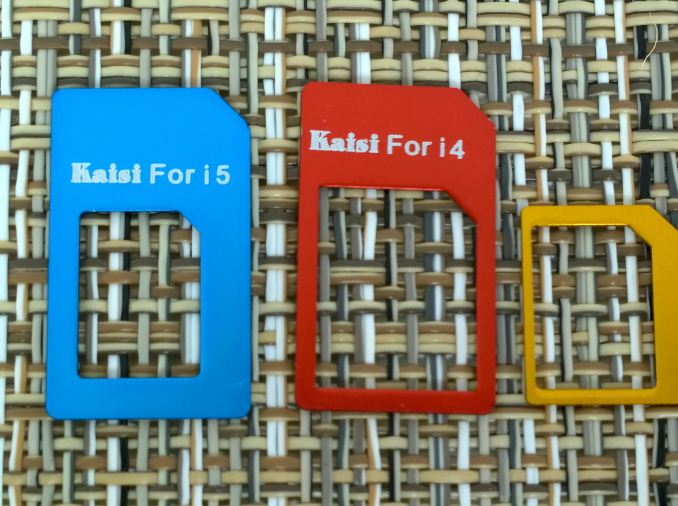
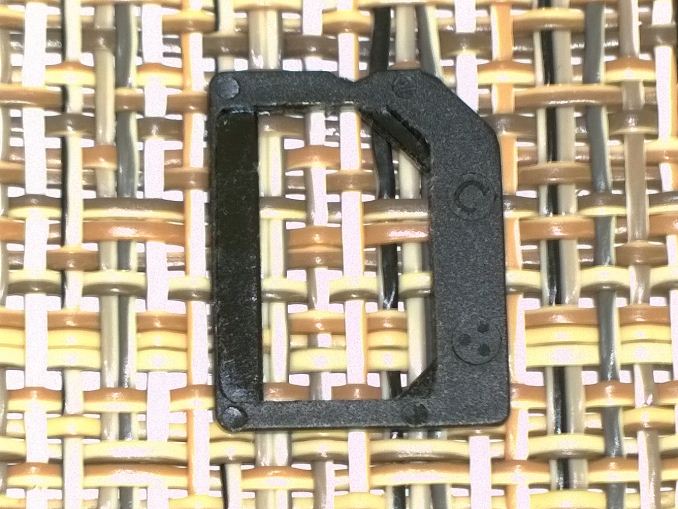
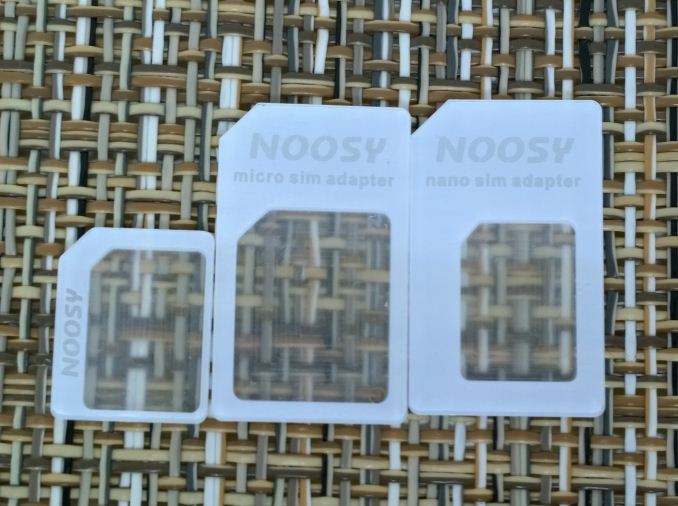
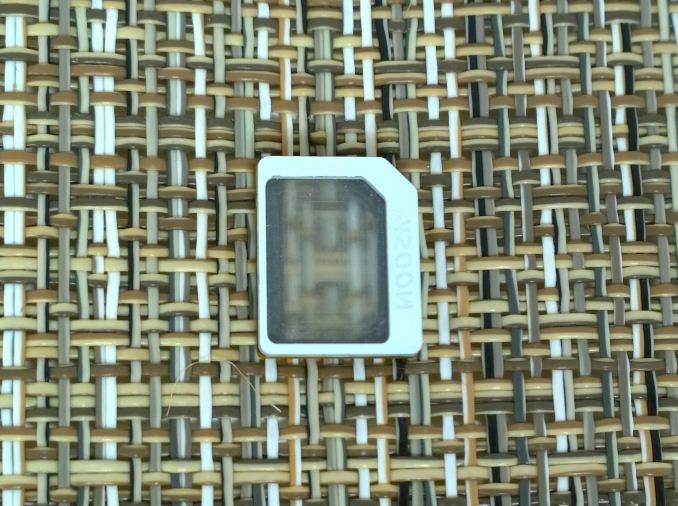








24 Comments
View All Comments
NedSarm - Saturday, May 24, 2014 - link
While I don't have first hand experience with a nano Sim card yet, I've found the easiest solution to be to get a real Sim card - more specifically a mini Sim - to use as an adapter. I ordered one of those sim cutters years ago along with some adapters. But even mini Sims back in the day were of different thickness. My Nokia N8 - which I believe has the worst Sim slot design ever -accepted the ATT Sims no problem but the T-Mobile one was a little thicker and it damaged the push to eject feature. Anyway I use a old ATT mini Sim with a cut out for micro Sim to switch back and forth with some clear tape.4745454b - Saturday, May 24, 2014 - link
Thought I'd chime in as I have some experience with this. FYI, I'm the same 4745454b as the mod on Toms hardware.I recently bought a "new" Galaxy S2. It wasn't as unlocked as I was lead to believe and my TMobile micro sim wasn't going to work. It needed an ATT sim. Because nano is the new size I went ahead and ordered an ATT nano sim from my carriers website and one of the "middle" type adapters. I was worried about the first and third type as tape can wear out over time. I didn't want to go remove the sim later on and find out the tape was torn and it was going to be a PITA to get the sim out. Overall I was very happy with the middle type. I didn't have any problems with thickness. My two complaints are; it's not big enough and the design is flawed.
Why make it so small? You can see in the first and third type that they go all the way to the top/sides. The middle doesn't. It's not that much more plastic, and if it was EXACTLY the same size I wouldn't worry about the sim coming loose. The flawed design comment is because putting the sim into the adapter is easy. But with my phone had to then flip it over to slide it in. This means that there is no longer anything holding the sim in place and getting it to slide in and not let gravity work took some doing on my part. I don't know if this is a problem with all phones but it seems to be with all the phones I've seen. If you put the sim in from the other end and THEN flip it over it would work a lot better.
That being said I'm happy with the one I've bought. I haven't lost my sim at any time. Removing it didn't seem to be an issue, though I admit I've only done it the one time when I was testing the adapter. I'll test it again when I come back from EDC2014/Vegas and buy my new phone in July. I don't know for sure if the tape is really an issue, but I've had no daily problems with the middle solution.
londedoganet - Saturday, May 24, 2014 - link
My experience with cutting a SIM to fit into a smaller slot is this: Don't.It's not the cutting that will fail you, it's the thickness of the resulting hacked-up card.
My first experience (cutting down a SIM into a microSIM) involved a supposedly professionally-done cut at a phone shop. It worked in the shop's tester iPhone. It didn't work in my phone. Why? It was too thick. In the end, I had to get a new microSIM from my telco. It wasn't cheap.
Oh, and when I tried to put my spanking-new microSIM into my old phone using a cut-out adapter, even the smallest amount of scotch tape made it impossible to fit. It was just TOO THICK. Imagine that; the regular SIM cut down is too thick to work as microSIM, the microSIM with an adapter is too thick to work as a regular SIM! You can't win.
Second experience went a lot better; did it myself, with a very sharp knife, a template, all that jazz. It didn't fit into the slot. Wanna know why? It was TOO THICK. I ended up having to thin it by some fraction of a millimetre by running the back of the card on some fine-grit sandpaper, all the while praying that I didn't sand down to the silicon die by the time it could fit.
It was at this point that I thought to myself; really? Is it really worth it, when you're doing basically reconstructive surgery on a piece of plastic, just to get it to fit in a phone?
greyhulk - Saturday, May 24, 2014 - link
The trick is to get a nano sim and then just adapt it to the bigger micro sim phones with one of these adapters. I have never had issues with it fitting any phone, and I currently have six different models that I switch between.piroroadkill - Saturday, May 24, 2014 - link
My experience from cutting from a mini-SIM to micro-SIM is this: it worked 100% fine.londedoganet - Saturday, May 24, 2014 - link
Good for you. My telco used thicker cards for their miniSIMs, which caused these problems in the first place. It varies from provider to provider. In my case, at least, it really wasn't worth it.evonitzer - Saturday, May 24, 2014 - link
I do not see a solution in your post. Don't trim it down because it might not fit, and then you might have to buy a new one. Or just buy a new one. Might as well try trimming it, don't you think?I'm 1 for 1. I sanded the edges a bit to take out the roughness my cuts created, but otherwise didn't do anything too special. I went mini to micro.
londedoganet - Saturday, May 24, 2014 - link
The solution was in my first paragraph: get a new SIM from your telco, and eat whatever fee they charge you for it. Either that, or sand down your SIM's thickness until it fits properly into the slot.londedoganet - Saturday, May 24, 2014 - link
*second paragraphlondedoganet - Saturday, May 24, 2014 - link
By all means, try trimming it. The worst that could happen is that you're down one SIM card that neither can't be used in your old phone (adapter makes it too thick) nor your new one (SIM is too thick to begin with). And even that can be fixed with a little sandpaper.If you've already made that decision to hack up and sand down your SIM card, who am I to stop you? I'm speaking mostly to those less willing to endure any potential hassles (in which case, maybe Anandtech is the wrong venue...)